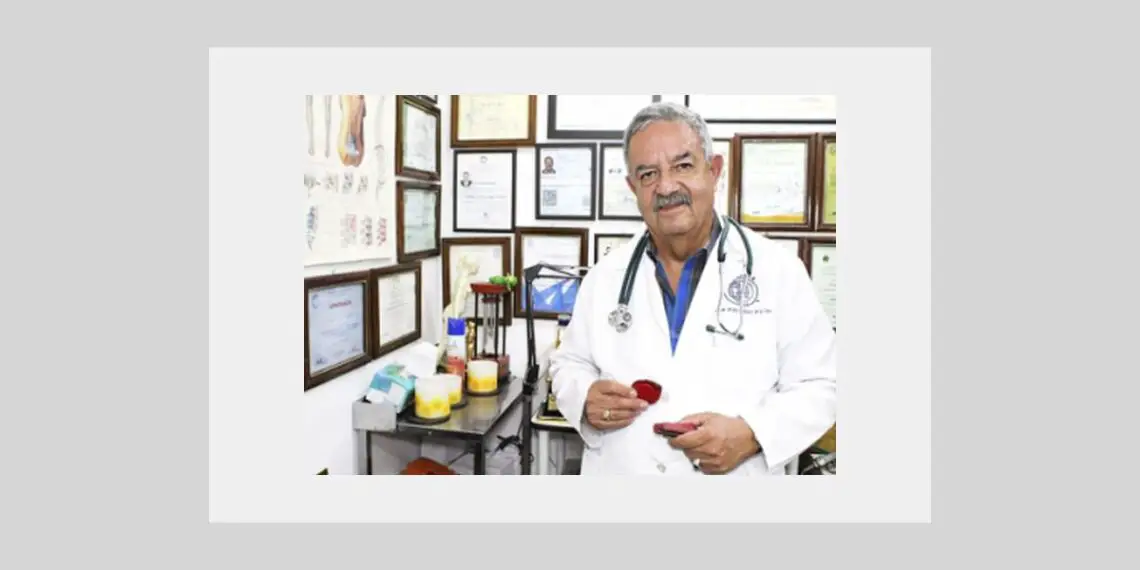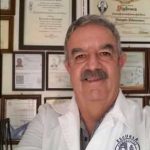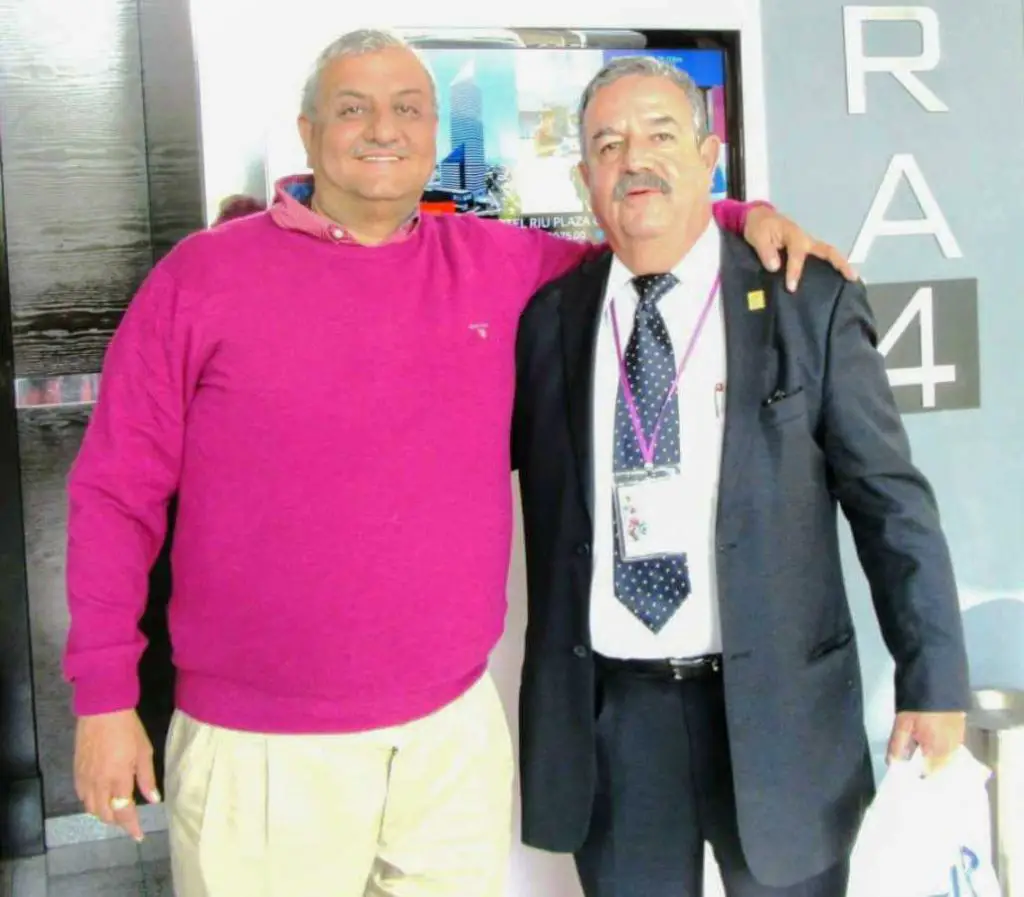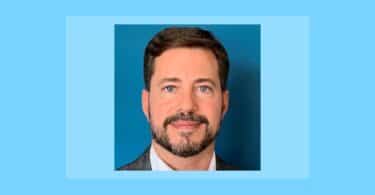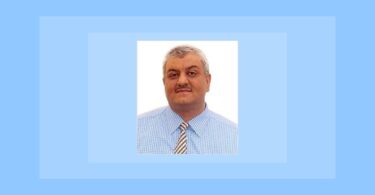Dr. Antonio Armando Álvarez De La Torre is a Mexican Homeopath, born April 7, 1955, in Morelia, Michoacán, Mexico. He practices homeopathy as well as massage therapy and orthomolecular medicine. Moreover, he pursues his passion of working as an actor in TV and radio, always contributing his knowledge of homeopathy with the aim to propagate this genuine healing art.
He holds diplomas from numerous colleges including Homeópatas Puros AC, Colegio Jalisciense de Médicos Homeópatas Universitarios A.C., Universidad Autónoma Chapingo, Escuela Homeópatas Puros Colegio Encino de Educación Universitaria en Medicina Alternativa, and Homeopathic Pharmacopoeia from Universidad Autónoma Chapingo.
Dr. Antonio Armando Álvarez
KS: Welcome to Hpathy, Dr. Álvarez. It is a great pleasure for me to interview you for our Hpathy ezine. We look forward to you sharing your knowledge and experience with us.
You are a physician with comprehensive experience in different methods of therapy, including homeopathy. How was your first encounter with Homeopathy?
AAA: In my youth, at the age of 17, to be exact, I had a friend, whose mother visited and was attended by a homeopathic doctor from Puebla, which is the city where I currently live. At one of those visits I was there with a severe cold. I had acrid tears and the mucus from my nose was burning so that my nose got sore. Dr. Lopez gave me some globules of Allium Cepa and the symptoms disappeared as if by magic, which got my attention very much. I was in high school and had decided to study law at the time, but it wasn’t until the fifth year that I took a course in Legal Medicine which aroused my interest in medicine. I decided to start over, remembering the miracle that Allium Cepa once did for me. I told myself, this was the path of my vocation. From then on I decided to study homeopathic medicine, which been my passion to this day.
KS: Great ideas like that of Samuel Hahnemann always find their way to us and so homeopathy also came to Mexico in the middle of the nineteenth century. Now, homeopathy enjoys a wide acceptance among the Mexican people. The population is different from that in Europe, as there are many indigenous peoples and people living in poverty. What can Homeopathy offer these people in particular?
AAA: You are right, Katja, in saying Homeopathy is universal. Unfortunately, allopathic pharmacies have made it their task to undermine the path of this “Healing Art”. The interests of this commercial monster are opposed to the salvation of human beings who could keep their health in balance with the benefits of homeopathy.
Although homeopathy functions legally in Mexico, it is, unfortunately, not accessible to the rural population and those living in extreme poverty. The Mexican government endeavors to bring medicare to all areas of the country, homeopathy is not brought to the most vulnerable population.
On the other hand, shamanism and herbal treatments are still being used, and there even exist trained midwives who bring children into the world who may never know a hospital. In my private practice, 90% of the patients belong to the comfortable middle class and there are very few of low economic status to whom I have access to provide homeopathic healing and care. With regard to the state of Jalisco, yes, homeopathic workshops are being brought to the poor and rural areas, but in the rest of the country we haven‘t reached those people who need it so much. There’s still a long way to go and a lot to learn.
KS: Homeopathy in Mexico also had to face difficult times of instability. At the moment there are more than 7,000 homeopaths in Mexico and the largest homeopathy hospital in Latin America, is in Mexico D.C. How did homeopathy develop in Mexico during the last years?
AAA: The Escuela Nacional de Medicina y Homeopatía was founded in 1849 and functioned under different administrations until 1923, since when it was funded by the Universidad Nacional Autónoma de México (UNAM), and subsequently, from 1936 on, it was assigned to the Instituto Politécnico Nacional (IPN), which oversees it to this day.
On the other hand, the Escuela Libre de Homeopatía was founded in October 1912. Both institutions, being installed in Mexico City, monopolized the homeopathic education in the whole country for many years, until the unrest began in Jalisco, a city in Guadalajara, demanding to teach courses of homeopathy too. On February 15, 1983, the teacher Soledad Salas Arriaga and her husband, Dr. Javier Vidales Gurrola, founded the Escuela Homeópatas Puros, which was the model to found other schools in the same city. For a long time, homeopaths from that school had to suffer constant attacks from the schools in Mexico City who convinced the sanitary authorities not to endorse the legalization of further schools in the country. Fortunately, owing to the tenacity and love for homeopathy of Dr. Javier Vidales Gurrola, recognition by federal education and health authorities was achieved, and nowadays the degree in homeopathy exists legally, teaching the unicist approach (single remedy) as founded by the beloved father of homeopathy, Dr. Samuel Hahnemann.The Hospital Homeopático Nacional (National Homeopathic Hospital) is indeed a renewed and effective wonder, but it is only for the graduates of the two homeopathy schools in Mexico City.
KS: How do you see the future development of Homeopathy in Mexico?
AAA: Fortunately, the development of homeopathy in my country is growing by leaps and bounds. Since the beginning of the 21st century, many new homeopaths have graduated from other legal and more recently founded schools, and there are also more Mexican laboratories that produce homeopathic remedies. All this will have a positive impact on the health of the Mexican people. As you say, there are more than 7000 homeopaths in Mexico plus those who are learning it, and these will disseminate the ideas of homeopathic therapeutics for the good of human, animal and crop health in Mexico. Another factor is that a lot of homeopathic literature already came to Mexico having been translated into Spanish, which makes learning easier.
KS: Other homeopaths from abroad like Dr. Farokh Master have taught in Mexico. How were they perceived?
AAA: The Escuela Homeópatas Puros has always been interested in cultivating and increasing the knowledge of its students, alumni and other homeopaths of the country. Each year a Symposium takes place, and in 2012 and 2013 Dr. Farokh Master gave a masterful presentation and clearly and precisely presented his perspective of homeopathic therapeutic methods. His attendance was very interesting and brought many consultations, both in the clinic and in homeopathic practice and therapy. He made many friends in Guadalajara, Mexico, amongst which I count myself.
KS: You also practice orthomolecular medicine. Did you find in practice that a lack of vital substances may constitute an obstacle for cure?
AAA: Yes, I practice orthomolecular medicine and know the theory of Linus Pauling. Much depends on the treating homeopath and the knowledge he has of each patient and, most important, on the complete adherence to our bible, The Organon. In fact I think that a balanced diet with essential nutrients such as vitamins, minerals, amino acids, trace elements and fatty acids supports the organism and contributes in maintaining a balanced state of health, which is necessary for the functioning of body cells, tissues, visceral organs, and even the vital energy. But homeopathy goes beyond, as it acts much deeper and is following Hering’s four laws of cure. Moreover, there are the Schüssler Salts which enable one to reach balance in cellular health.
KS: For Hahnemann, homeopathy was the superior therapeutic method. Nevertheless he recommended a few other useful therapeutic tools, such as massage and mesmerism. What are your practical experiences with using massages and what does its therapeutic spectrum consist of ?
AAA: Dr. Hahnemann, who had always been concerned about the equilibrium of human health, required the homeopathic physician to be a profound observer in order to know the state of all morbid, objective, subjective, sensory, functional, physiological, physical and psychic manifestations. Practricing this observation gradually leads to the true knowledge of the disease, because the real genesis of the ailments will be shown in the particular conditions of the patient. Thanks to the knowledge obtained in the clinic, we can determine the efficacy of therapy which allows us to restore the patient to their normal order. Based on this it is known that there may be blockages and energy stagnation in certain areas of the body which can be solved with draining massage and chiropractic techniques. The latter allows us to release root compressions in the intervertebral spaces from the cervical to the lumbar area, which allows the energy to flow freely and the patient to heal more quickly.
The healing power of massage is known everywhere and scientifically proven.
It is a manual therapy designed to produce a series of controlled physiological reactions, in the musculoskeletal system and/or other systems of the body, which lead to the therapeutic relief of the treated individual. By means of these massages we accomplish the following:
Mechanical action on tissues
Warming up, stimulating and developing the musculature
Stimulating or calming the nervous system (analgesic effect)
Stretching and relaxing the muscles
Improving adhesions, making tissues more flexible
Improving circulation, eliminating organic exudates
It has a reflex action on the nervous system
Improves psychological well-being
If we administer the appropriate homeopathic remedy(s) to patients and also help them with draining, reducing, relaxing massages and balance the function of the spine, realigning its structure and eliminating root compressions by rotation or lateralization of the vertebral bodies, even if there is scoliosis, kyphosis or lordosis, we will achieve a more rapid cure.
Homeopathic medicine is an art and science which requires the true understanding of the patient, the disease and its remedies. But it is also very useful to use other techniques such as those already explained, to accelerate the healing of the patient. This is what I do with much success in my practice.
KS: You pursue another passion – working in television and radio, always contributing your knowledge of homeopathy and to propagate this genuine healing art. Please, tell us something about your work there .
AAA: More than 10 years ago I was invited by a radio program to talk about a certain disease. I developed the theme according to homeopathic therapeutics and the theory of its cure based on the law of similars. There I found the opportunity to make the great benefits known that homeopathy offers in achieving health in acute and chronic diseases. Someone asked me why homeopathy acts slowly and does not work in acute cases. I answered that the the only thing slow was the person who treated him and that person surely wasn‘t a homeopath. He told me that he had bought a materia medica and repertory and used them for self-medication but had concluded that it did not work. This forced me to remain present in the media to educate people about the benefits and wonders of homeopathy, and that is must be applied by a health professional and not an empirical learner. SoI‘ve been able to contribute my grain of sand on the great beach of universal homeopathy. Since then I have made my slogan: “Long live homeopathy in order for humanity to live” , which I always publish and constantly repeat.
KS: Thank you very much for sharing your thoughts today. I am sure that our readers now understand the passion and success with which homeopaths practice in Mexico, including you!
Dr. Antonio Armando Álvarez – Entrevistado por Katja Schütt
BIO: Dr. Antonio Armando Álvarez De La Torre es un Homeópata mexicano nacido en 1955 el dia 7 de abril en la Ciudad de Morelia Michoacán México.
Diplomado en Homeopatía Hahnemanniana por Homeópatas Puros AC.
Diplomado en Terapéutica Homeopática por el Colegio Jalisciense de Médicos Homeópatas Universitarios A.C.
Diplomado en Homeopatía por la Universidad Autónoma Chapingo
Diplomado en Homeoterapias por el Colegio Encino de Educación Universitaria en Medicina Alternativa
Diplomado en Farmacopea Homeopática por la Universidad Autónoma Chapingo.
Diplomado en Medicina Natural por la Sociedad Médica de investigaciones Enzimáticas.
Licenciado en Homeopatía por Escuela Homeópatas Puros.
Asistente al Simposium XXXVI de Escuela Homeópatas Puros “Clínica y Práctica de La Homeopatia” impartido por el Dr. Farokh J Máster de 2012
Asistente al Simposium XXXVII de Escuela Homeopatas Puros “La Clínica Homeopática en su Práctica” impartido por el Dr. Farokh Master en 2013
Cédula Profesional (Patente) 10110759 Dirección General de Profesiones
Cédula Profesional PEJ 220475 Secretaria General de Gobierno Jalisco Mexico
KS: ¡Bienvenido a Hpathy, Dr. Álvarez! Es un gran placer para mí entrevistarle para nuestro Ezine de Hpathy. Esperamos que comparta su conocimiento y experiencia con nosotros.
Usted es medico con mucha experiencia en diferentes metodos de terapia, la Homeópatia incluida. ¿Cómo fue su primer encuentro con la Homeópatia?
AAA:
En mi juventud, a los 17 años para ser exacto, tuve una amistad, cuya madre visitaba y se atendía con un médico homeópata de Puebla, que es la ciudad donde actualmente radico. Y en una de tantas visitas iba yo con un fuerte resfriado, lagrimeo acre y moco ardiente que me quemaba la nariz, el doctor López me ofreció unos globulitos de Alliun Cepa y como por arte de magia se desaparecieron los sintomas, cosa que me llamo muchísimo la atención, yo estaba en la escuela preparatoria y había decidido estudiar para abogado en esa época, pero fue hasta el quinto año cuando recibí una cátedra de Medicina legal y me empezó a llamar la atención la medicina, decidí recomenzar y me acordé de lo milagroso que fue el Alliun Cepa y me dije, este es mi camino de vocación. Desde entonces decidí realizar mis estudios en Medicina Homeopática misma que me ha acompañado hasta estos días de mi vida.
KS: Grandes ideas como la de Samuel Hahnemann siempre cruzan cielo y mar, asi que la Homeópatia llego a México cuando vinieron algunos médicos homeópatas españoles entre 1850 y 1856. Mientras tanto, la Homeopatía goza de amplia aceptación entre la población en México como en mucho otros países del mundo. Pero la población es diferente a la europea, hay muchos pueblos indígenas y personas en situación de pobreza. ¿Qué puede ofrecer la Homeópatia a estas personas en particular?
AAA:
Tienes razón Katja, la Homeopatía es universal y desgraciadamente los laboratorios farmacéuticos alopaticos, se han encargado de minar el camino del “Arte de Curar”, los intereses de ese mounstro comercial, preponderan ante la salvación de seres humanos que podrían mantener en equilibrio su salud con las bondades de la homeopatía.
En México aunque la homeopatía está funcionando legalmente, desgraciadamente no es accesible a la población rural y en condiciones de extrema pobreza, el gobierno mexicano se preocupa por llevar salud a todos los rincones del país, pero desgraciadamente en ese contexto la homeopatía no es llevada a la población más vulnerable.
Por otra parte aún es usado el chamanismo y la curación por medio de remedios herbolarios e incluso existen aún parteras empíricas que traen al mundo a niños que tal vez no conocerán un hospital. En mi consulta privada el 90 % de pacientes son de clase media a acomodada, y son muy pocos de baja condición económica los que me han permitido brindarles la curación y atención homeopática. Terminando la respuesta a tu pregunta en el estado de Jalisco, si llevan jornadas de curación homeopática a zonas pobres y rurales, pero en el resto del país no se ha llegado aún a esa gente que tanto la necesita, hay mucho camino que emprender y andar.
KS: La Homeopatia en México tambien ha enfrentado períodos de inestabilidad. En la actualidad hay mas de 7.000 homeopatas en México y la hospital de Homeópatia mas grande de América Latina. ¿Cómo ha desarrollado la Homeópatia en México en los ultimos anos?
AAA:
La Escuela Nacional de Medicina y Homeopatía fue fundada en 1849 pasando por varias administraciones hasta que en 1923 fue auspiciada por la Universidad Nacional Autónoma de México (UNAM) y posteriormente desde 1936 fue asignada al Instituto Politécnico Nacional (IPN)
Mismo que lo rige hasta la fecha.
Por otro lado en octubre de 1912 fue fundada la Escuela Libre de Homeopatía. Ambas instituciones instaladas en la ciudad de México, monopolizaron por muchos años los estudios homeopáticos en el país entero, hasta que comenzó la inquietud en la ciudad de Guadalajara Jalisco de impartir cursos de Homeopatía, el 15 de Febrero de 1983 la Profesora Soledad Salas Arriaga y su esposo el Dr. Javier Vidales Gurrola fundaron la Escuela Homeópatas Puros misma que fue Puntero para fundar otras escuelas en la misma ciudad, por mucho tiempo Homeópatas Puros sufrió ataques constantes de las escuelas de la ciudad de México a tal grado de convencer a la autoridades sanitarias que no avalara la legalización de otras escuelas del país, afortunadamente la tenacidad y el amor por la Homeopatía del Doctor Javier Vidales Gurrola, logró el reconocimiento de las autoridades de educación y salud federales y hoy en día existe legalmente la licenciatura en Homeopatía, con la escuela Unicista misma que fundó el amado padre de la Homeopatía, Dr. Samuel Hahnemann.
El Hospital homeopático nacional en efecto es una maravilla renovada y efectiva pero solo es para los egresados de las dos escuelas de abolengo homeopático en la ciudad de México
KS: ¿Cómo ve el desarrollo futuro de la Homeópatia en México ?
AAA:
Afortunadamente el desarrollo de la homeopatía en mi país está creciendo a pasos agigantados a partir del inicio del Siglo XXI se han graduado muchos nuevos Homeopatas en otras escuelas legales y de fundación más reciente y además existen más laboratorios mexicanos que producen remedios homeopáticos, todo suma en favor de la salud. y eso repercutirá favorablemente en la salud del pueblo mexicano, como tú dices en la actualidad, existimos más de 7000 Homeopatas en México más los que se van forjando en las aulas y ellos irán diseminando el uso de la terapéutica homeopática en bien de la salud humana, animal y herbolaria en México. Otro factor excelente es que ya llega a México mucha literatura homeopática traducida al español, y eso facilita más el aprendizaje.
KS: Homeópatas del extranjero como Dr.Farokh Master han enseñando en México. ¿Como fueron percibidos?
AAA:
La Escuela Homeópatas Puros, siempre preocupada por cultivar y acrecentar los conocimientos de sus alumnos, exalumnos y Homeopatas del pais, cada año hace un Simposium y en los años 2012 y 2013 tuvimos como ponente la magistral ponencia de el Dr. Farokh Master y nos expuso de manera clara y precisa otro ángulo de los métodos terapéuticos homeopaticos, su presencia fue muy interesante y aportó muchas nuevas buenas cosas para nuestras consultas tanto en la clínica como en la práctica y terapéutica homeopática, dejó muchos amigos en Guadalajara México entre los que me cuento yo.
KS: Tambien practica la medicina ortomolecular. ¿Ha encuentrado frequentamente en la práctica que una falta de sustancias vitales se ha convertido en una barrera para la curacion?
AAA:
Sí practico y conozco a la medicina ortomolecular, estoy de acuerdo con la la teoría de Linus Pauling, y además pienso que con una alimentación balanceada en donde se aporten al organismo los nutrientes escenciales como las vitaminas, minerales, aminoacidos, elementos traza y ácidos grasos podría mantener en una posición de salud equilibrada para el funcionamiento de las células corporales, y por ende los tejidos, órganos viceras y hasta la misma energía vital, pero la homeopatía va más alla, es más profunda tal y como lo dictan las 4 leyes de Hering, aunque también. Existen la sales de schussler que ofrecen un equilibrio en la salud celular
No considero que sea una barrera para la curación, mucho depende del homeópata tratante y del conocimiento total de cada paciente y lo más importante hacer una aplicación absoluta y total de nuestra biblia El Organon.
KS: Usted tiene otra pasión – trabajar en televisión y radio. Por favor, cuéntanos sobre esto..
AAA:
Desde hace más de 10 años fui invitado a un programa de radio para hablar de una enfermedad determinada, desarrolle el tema de acuerdo a la terapéutica homeopática y apoyando la teoría de su curación mediante la ley de los similares, allí encontré la oportunidad de hacer conocer los grandes beneficios que ofrece la homeopatia para alcanzar la salud en enfermedades agudas y crónicas, alguna persona radioescucha, llamó por vía telefónica y me preguntó por qué la homeopatía era lenta y no servía para casos agudos, yo le respondí que el lento era quien le había atendido y que seguramente no era homeópata, me dijo que había comprado una materia médica y un repertorio y que de allí se estaba auto medicando y que se había dado cuenta de que no funcionaba eso me obligó a tratar de permanecer en los medios de comunicación para propagar las bondades, beneficios y maravillas de la homeopatía, siempre y cuando fuera un profesional de la salud y no un aprendiz empírico y desde entonces me ha dado muy buen resultado, he podido aportar mi granito de arena, en la gran playa de la homeopatía universal, hice desde en tonces un lema que siempre publico y me abandera constantemente, “Viva la homeopatia para que viva la humanidad”
He Sido y sigo siendo invitado a programas de radio y televisión y mi compromiso con nuestra amada homeopatia es continuar difundiendola atraves de todos los medios .
KS: ¡Muchas gracias por la entrevista interesante y por compartir sus pensamientos! Estoy seguro de que nuestros lectores han tenido una buena impresion de la pasion y del exito con el que se practica la homeopatia en Mexico.

